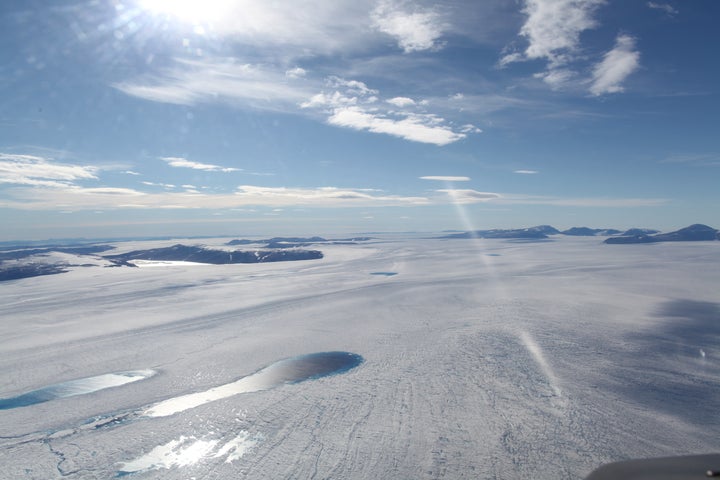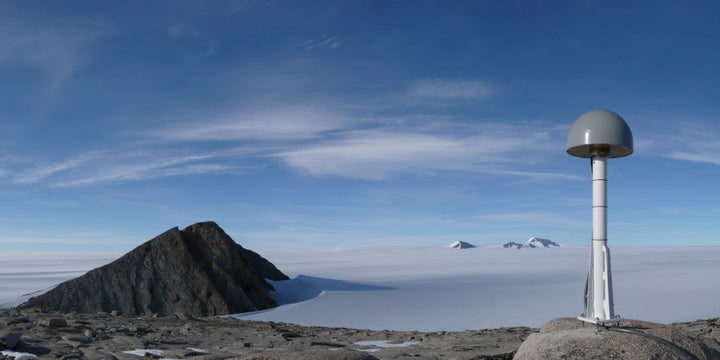
Activity in the Earth’s mantle has tricked scientists into thinking that Greenland’s ice sheet is shrinking at a slower rate than it actually is.
A new study explains how the same mantle hotspot which powers Iceland’s volcanoes has distorted calculations for the loss of Greenland’s ice.
According to the new research, the phenomenon has softened the mantle rock under the ice in a way that led scientists to underestimate melting by about 20bn metric tons a year.
Between 2003 and 2013, the Arctic nation lost 2.7tn metric tons of ice, 200bn metric tons more than previously calculated - a 7.6% difference.
Michael Bevis, professor of earth sciences at Ohio State and co-author of the study, said: “It’s a fairly modest correction.
“It doesn’t change our estimates of the total mass loss all over Greenland by that much, but it brings a more significant change to our understanding of where within the ice sheet that loss has happened, and where it is happening now.”
Over tens of millions of years, the Earth’s crust in the region has been slowly moving north west. And more than 40 million years ago, the crust passed over a particularly hot column, causing the mantle rock below to soften.
The huge weight of ice in the last ice age caused the crust to sink into the softened rock. But as the global temperature rose at the end of the era, the ice shrunk and the crust began to bounce back.
With mantle rock flowing beneath Greenland today, it continues to rise.

Scientists said they knew that mantle would be flowing under the crust, but underestimated the speed of the process.
Bevis explained: “GRACE [satellites] measure mass, period. It cannot tell the difference between ice mass and rock mass. So, inferring the ice mass change from the total mass change requires a model of all the mass flows within the earth. If that model is wrong, so is the ice mass change inferred from GRACE.”
Researchers had presumed that the mantle was about as viscous as it would be anywhere in the world, but the Icelandic hotspot accelerated the process.
The scientists noticed the error after measuring uplift rates at two nearby stations, which indicated the local mantle was far more viscous than normal.
An Ohio State University spokesperson said: “To the GNET team, the 7.6% discrepancy in overall ice loss is overshadowed by the fact that it concealed which parts of the ice sheet are most being affected by climate change.”
Bevis added: “This result is a detail, but it is an important detail.
“By refining the spatial pattern of mass loss in the world’s second largest—and most unstable – ice sheet, and learning how that pattern has evolved, we are steadily increasing our understanding of ice loss processes, which will lead to better-informed projections of sea level rise.”
Scientists revealed last month that the true impact of climate change on rising sea levels has been concealed for decades.
